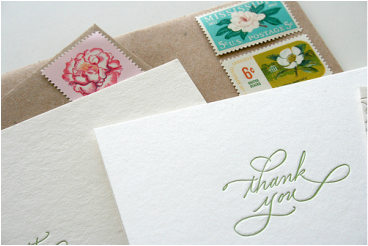
Here are some guidelines for writing condolence thank you notes:
1. It is very thoughtful to thank individuals for their kindness following a loss. Sympathy thank you notes are very personal and what you say depends on how you feel about writing the notes.
2. The bereaved often create a template and use the same format for all notes, modifying as appropriate.
3. Some bereaved find that writing notes is an outlet for their grief and feel it’s therapeutic. Others find it terribly painful and are not up to the task. Mourning is not a time for guilt so either way is acceptable.
4. Notes can be simple, for example: "Thank you so much for the flowers in Sally’s memory. It was a very thoughtful way to remember her. Your kindness is appreciated." You can add: "Your caring gesture was helpful during this difficult time."
5. If you want to write more personal notes to friends, neighbors, or colleagues you can certainly let them know your loved one mentioned them many times and their friendship meant so much. Or, if individuals shared stories in their notes, you can let them know how much their note and thoughts of your loved one meant to you. Whatever strategy you take is fine; the most important thing is that you’re acknowledging others' kindnesses. And you are doing it for your loved one.
Robbie Miller Kaplan is an author who writes from a unique perspective as a mother who has lost two children. She has written How to Say It When You Don't Know What to Say, a guide to help readers communicate effectively when those they care about experience loss, available in ebooks for "Illness & Death," "Suicide," "Miscarriage," "Death of a Child," "Death of a Stillborn or Newborn Baby," "Pet Loss," "Caregiver Responsibilities," "Divorce" and "Job Loss." All titles are in Amazon's Kindle Store.
 RSS Feed
RSS Feed
